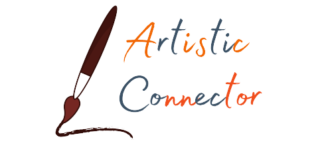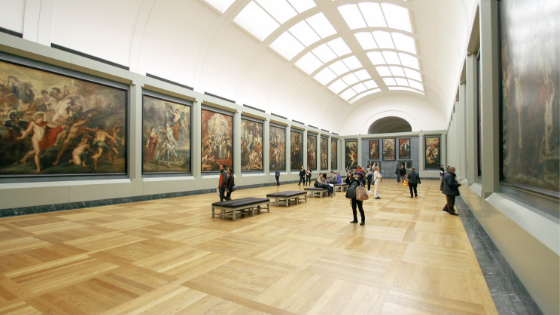Museum education is one of the most interesting fields in the art world right now. The evolution of museum education over the last century, but especially since 1986, has been fascinating.
In 1986, Stephen Dobbs and Elliot Eisner published a study on the state of museum education and found it lacking. They discovered that museum education department heads lacked a mission; the field as a whole lacked a centralized focus, and other museum department heads lacked a clear understanding about the purpose of education in their own museums1. This study helped create a drive to overhaul museum education.
The days of docents and lecturers providing the bulk of information that museum visitors receive are over. While docents and lecturers are still very much a part of museum life and invaluable resources, there has been an effort to provide the visitor with as much information as they want from the moment they walk through the doors of the museum.
Technology integration has been a fundamental turning point in this effort. The American Natural History Museum in New York offers a free smartphone app which allows visitors to learn more about the exhibits they’re viewing. It also provides GPS-like navigation to any exhibit as well as the bathroom2. I have personally used this app and can attest to how it enhances the experience. Technology integration is still relatively new and sometimes it is not successful. You have probably wandered through a museum and noticed tablets or computers that are supposed to supplement the museum collection in some way sit alone in a corner unused or even broken. But as museums figure out the best way to implement technological tools, visitor experience will continue to get better.
How has this overhaul of museum education affected museum educators since 1986? Natasha Reid says there are still opportunities for improvement. She claims that museum education is still not understood, even in museums where “understandings of the profession are still minimal3.” Additionally, the majority of museum education job postings require an advanced degree in Art History, meaning that museum educators have a similar, but less advanced educational background to curators. This sets museum educators up as lesser versions of curators from the beginning when the practical requirements of museum education are significantly different to those of being a curator. Reid stresses the importance of requiring a degree in education to ensure that museum educators are prepared to “be proficient in connecting these to the learning styles, needs, and interests of diverse publics4.”
Aside from that study, there have been other reasons museums have shifted the role of education. The 1980’s culminated with the so-called “Culture Wars,” in which North Carolina Senator Jesse Helms and other tried to defund the National Endowment for the Arts because the NEA funded exhibits by “controversial” artists like Robert Mapplethorpe and Andres Serrano. Arts institutions found themselves in the unfamiliar position of needing to defend the value of art to society.
At about that time, we saw museums shed their “gate-keeper” attitude that was seen to alienate people, including elected officials. Before this period, it was expected for museums to provide very little information about their collections and virtually no context at all. A quick tour of any encyclopedic museum (a museum that focuses on local and global objects, rather than focusing on a specific topic) today will show that institutions are trying very hard to explain the motives, environments, and cultural attitudes that correspond to each piece. There are also community initiatives in many museums that try to bridge gaps between people who have felt unwelcome in art spaces before and art institutions.
The third agent of change we will discuss is something that I touched on a little bit in my previous post. That is the relationship between museums and schools. Museums are expected to provide supplemental education on field trips, but as field trips days are declining, museums are trying to find new ways to provide that education outside the parameters of the school day.
At about the time Dobbs and Eisner were compiling their research, Tyler Zeller was investigating the museum/school relationship. His conclusions were that museums were seen as a continuation of the classroom and if they are seen “merely as a collection of teaching aids designed to augment classroom learning, but more insidiously, signals students that museums are places to which no one would ever go voluntarily5.” The solution is to play to the strengths of museum education.
The experience in a museum is fundamentally different than the experience in a classroom and museums should give students something they can not get in a classroom. Namely, museums should understand that “the education goal of museums is not to import facts, but also broad overviews, concepts, stimulation of interest, values, and new ways of thinking about the world.6” Since Zeller published his article, we are seeing museums focus on youth programming to complement, rather than supplement, school education. And since field trip days are declining, museums are becoming more creative in thinking of ways to get young people through the doors. This means things like interactive exhibits for children. They are also trying new ways to get the 18-30-year-old crowd and that includes things like scavenger hunts (complete with open bar).
To wrap up, the 80s was a tumultuous time for art in America and museums had to rethink their education departments. They’ve come a long way in understanding the unique strengths education departments possess that can keep museums relevant in the years to come, but there is still room for improvement. Museum educators are at the forefront of a movement and things are only going to get better.
- Dobbs, Stephen M., and Elliot W. Eisner. “The Uncertain Profession: Educators in American Art Museums.” Journal of Aesthetic Education 21, no. 4 (1987): 77–86.
- Berger, Joseph. “Find the Whale and the Bathroom With the Natural History Museum App.” The New York Times, December 22, 2017, sec. Arts.
- Reid. “Getting There: Exploring Art Museum Educators’ Paths to the Profession.” Visual Arts Research 40, no. 2 (2014): 111.
- Reid. “Getting There: Exploring Art Museum Educators’ Paths to the Profession.” Visual Arts Research 40, no. 2 (2014): 113/
- Zeller, Terry. “Museum Education and School Art: Different Ends and Different Means.” Art Education 38, no. 3 (1985): 6–10.
- Zeller, Terry. “Museum Education and School Art: Different Ends and Different Means.” Art Education 38, no. 3 (1985): 6–10.


Pingback: Museum Selfies: How They Create And Define Identity | Artistic Connector
Pingback: Artists in Covid-19: Do We Need Something Like the Federal Art Project? | Artistic Connector